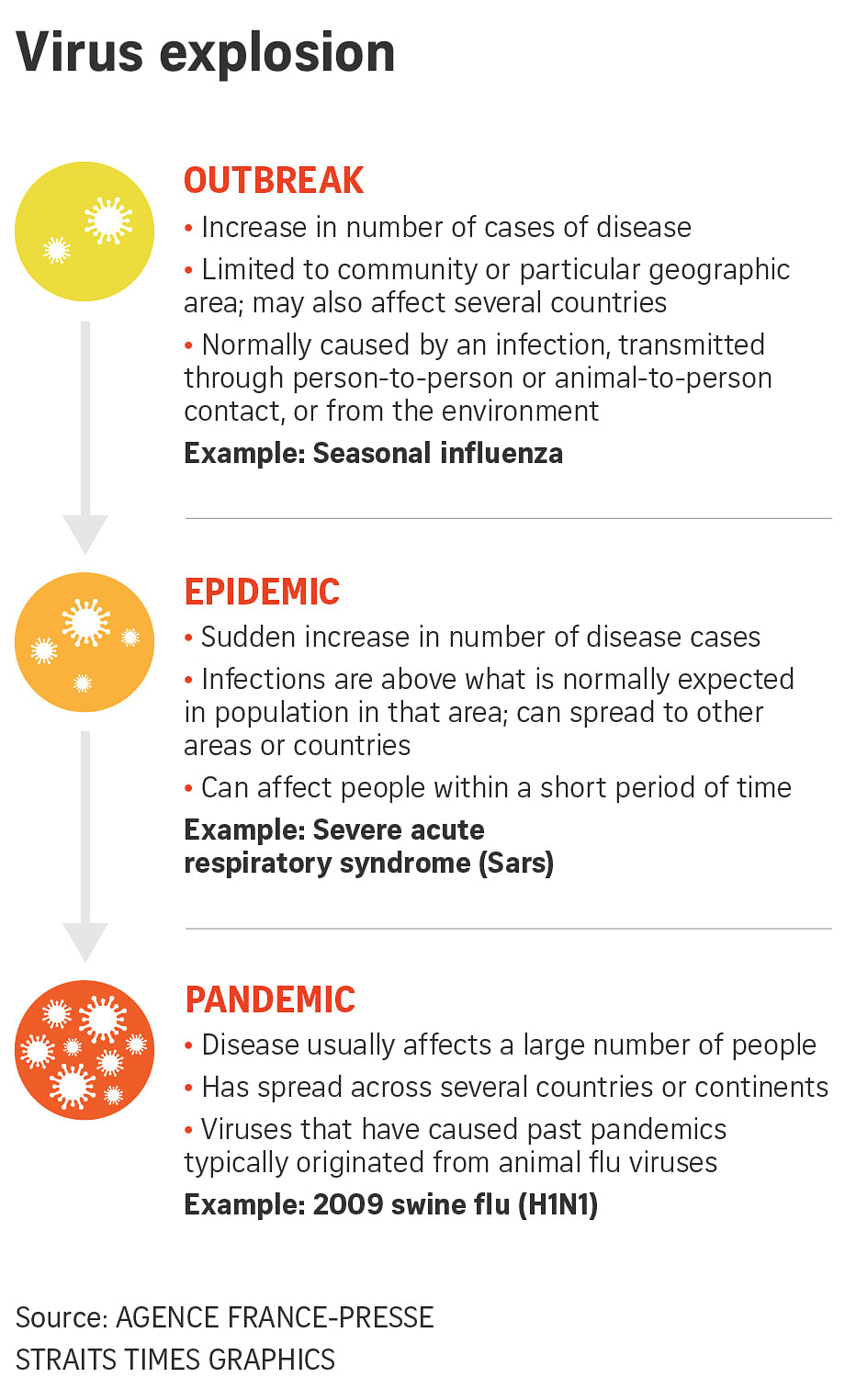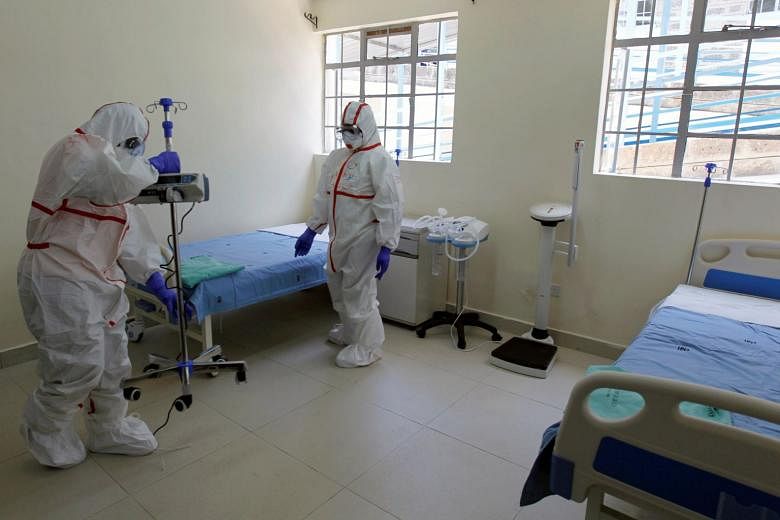SINGAPORE - It's official: The coronavirus outbreak is now a pandemic.
The World Health Organisation finally made the pronouncement on Wednesday (March 11), as cases of the deadly disease surpassed 120,000 globally and deaths exceeded 4,300.
"All countries can still change the course of this pandemic," WHO director-general Tedros Adhanom Ghebreyesus said as he made the declaration. "If countries detect, test, treat, isolate, trace and mobilise their people in the response, those with a handful of cases can prevent those cases becoming clusters and those clusters becoming community transmission."
So, what exactly is a pandemic; why is the WHO using this term only now, months after the outbreak surfaced in China; and what does this mean for all of us? We answer your most pressing questions.
What is a pandemic?
Simply put, a "pandemic" is a worldwide spread of a new disease, against which most people do not have immunity. It is more serious than an "epidemic", which refers to a disease constrained to certain regions or communities, which is in turn a bigger threat than an "outbreak", which means the sudden occurrence of a disease in a specific time and place.
While there is no strict numerical definition for the term, a pandemic often occurs after efforts fail to contain lower-level outbreaks in regions around the world. The goal then switches from containment to mitigation - to ease the pain of the spread of the disease.
Why now?
The WHO previously stopped short of upgrading the term from an "epidemic" even as coronavirus cases mushroomed across most continents, with South Korea, Italy and Iran being the worst-hit countries outside China. Even then, the United Nations body cited the lack of an "uncontained global spread". It said it did not want to give the impression that the disease was unstoppable.
But the fast-spreading disease is now rapidly building up across Europe and the United States. About 60 per cent of the world's 195 countries have now reported confirmed cases of infection.
Isn't it just a label?
The labelling may seem just a matter of semantics and will not affect the behaviour of the virus but the WHO hopes it will change how countries tackle the crisis, giving governments around the world greater urgency to enact emergency action plans to put a lid on the spread of the virus.
"The challenge for many countries who are now dealing with large clusters or community transmission is not whether they can do the same - it's whether they will," Dr Tedros said on Wednesday. "Some countries are struggling with a lack of capacity. Some countries are struggling with a lack of resources. Some countries are struggling with a lack of resolve."
Dr Tedros previously expressed frustration with what he described as a lax response to the crisis by certain countries, though he did not name which ones.
The WHO's pronouncement on Wednesday also came as the US government's top infectious disease official, Dr Anthony Fauci, warned that the coronavirus was "10 times more lethal than the seasonal flu".

What does this mean on the ground?
Dr Tedros said the WHO has now asked all countries to activate and scale up their emergency response system, to communicate with people about the risks of the virus and how they can protect themselves from it, as well as to find, isolate, test and treat every Covid-19 case and trace every contact.
The US Centres for Disease Control and Prevention previously said there are a range of measures health officials can take if the outbreak spreads widely in the country. One major tool is social distancing, aimed at increasing the physical space between people by limiting personal interactions, thereby slowing the spread of the virus.
Social distancing measures include closing schools, rearranging desks, making employees work from home, cancelling large public events, and quarantining those who may have been exposed to the virus. Such precautions are already in place in many countries, but governments around the world are likely to roll out more of such measures in the coming days.
When was the last pandemic?
The last disease to be labelled a pandemic was the 2009 outbreak of a new strain of H1N1 flu, or swine flu. The virus infected about 62 million people in the US alone and may have killed as many as 575,000 people worldwide in the first year it circulated, according to the CDC.
With additional reporting from Bloomberg, The New York Times











